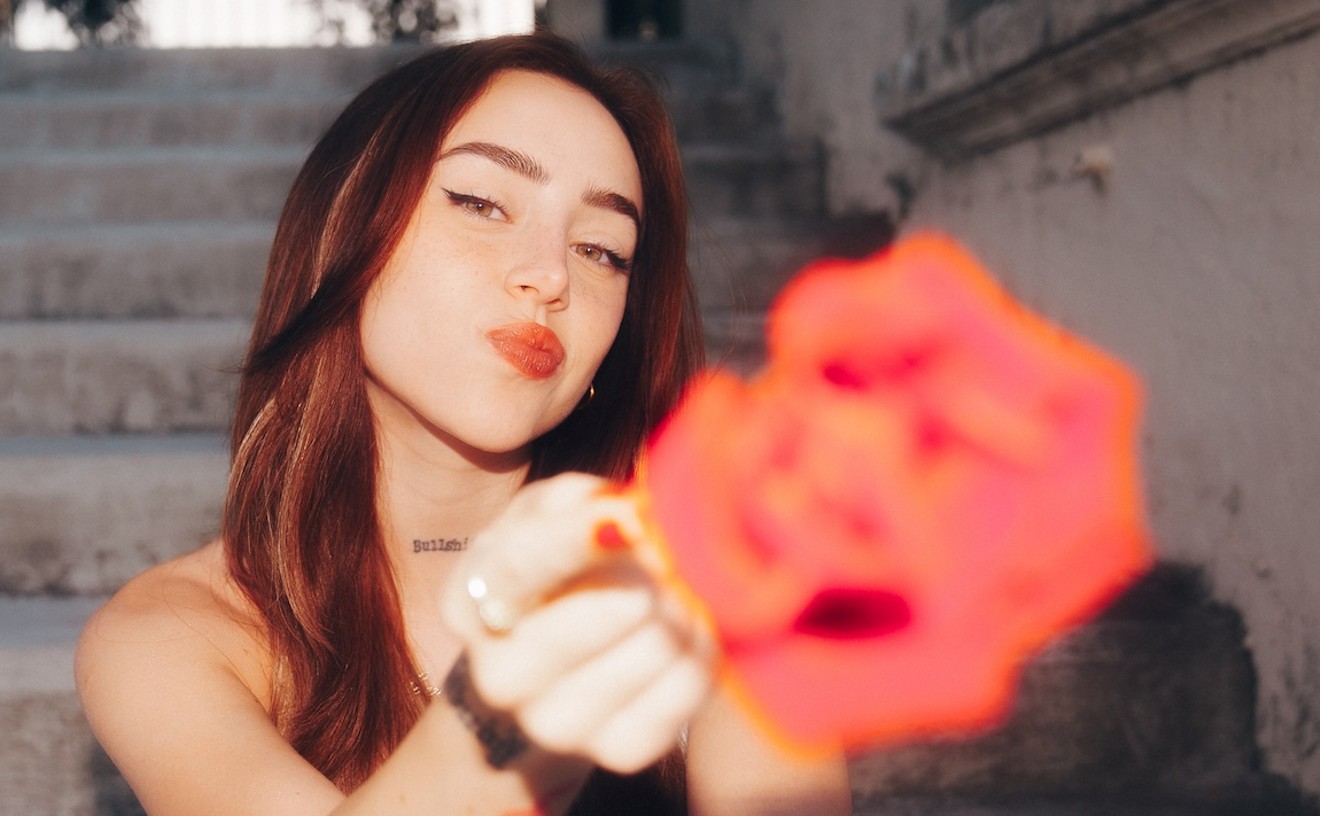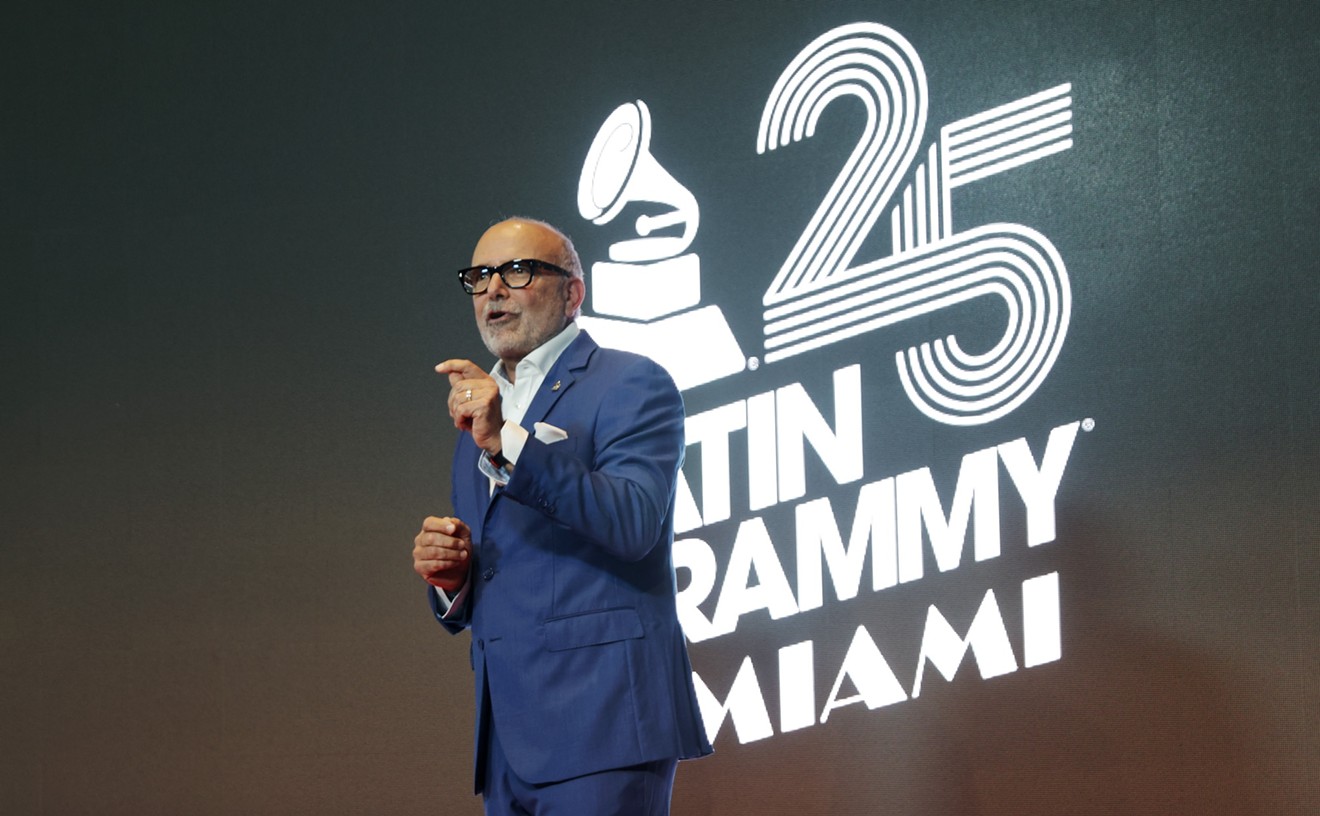After a couple of low-profile years spent mostly working in her studio, Anderson has launched a multimedia barrage of product that also includes The Ugly One With the Jewels, a CD of stories and songs recorded live in London, and Stories From the Nerve Bible, a retrospective book of texts, pictures, and musical scores from two decades of performances. And for Internet surfers craving virtual immediacy, Voyager has set up an interactive Laurie Anderson area called "The Green Room" on its World Wide Web site, where fans can access video and audioclips, leave messages for Anderson, and read her daily comments.
"It would be really easy for me at this point to hang out in New York and just make contact with people through the electronic world," Anderson observes during a call from her lower Manhattan studio, furnished with eleven computers, stacks of sound equipment, piles of technical manuals, and a recording booth. "But I like this old-fashioned thing of going to theaters and performing for an audience.
"So I just like to get out on the road," she says, speaking loudly above the rumble of trucks moving down the street below her window. "With a lot of machines, of course. I couldn't leave those at home."
About 40 tons of equipment will accompany Anderson on stage tonight (Thursday) when she performs The Nerve Bible at the Broward Center for the Performing Arts, one stop on the national tour the artist began in February. The show features three twelve-foot-wide screens flashing cosmic pictures and Internet commands, laser lights, two computer-generated costars named Bruce and Agnes, and recorded vocals by Anderson's lover, Lou Reed. Anderson usually wears one of her trademark musical suits and plays her electric violin during the two-act show.
The performance involves more hardware and complex computer maneuvers than any of the electronic extravaganzas that brought Anderson international fame in the 1980s as a twentieth-century Cassandra. The artist says she didn't exactly plan for so much technological baggage, that the images she developed for The Nerve Bible over a three-year period "just looked good very, very big. [The show] is really a very strange blend of very high tech and very low tech that shifts quite quickly between the two," she explains, effectively summing up the nature of her work over the past twenty years.
Although typically characterized as a high-tech superwoman, the 47-year-old Anderson is most of all a storyteller. Her value as a contemporary bard has become even more apparent as mainstream culture has begun to catch up with her own computer proficiency. Anderson's technological tricks may fail to amaze these days, but the more audiences know what's going on behind the curtain, the more they can appreciate her nimble balancing act in the shrinking space between humans and machines.
The last time Anderson appeared in South Florida, in 1992, she presented an unadorned monologue about the Gulf War and the Clarence Thomas hearings called Voices From Beyond. She had tired of her reputation as some sort of futuristic android, and expressed a need to get away from all of the gadgets for a while. That experience led her back to her studio. "I had done some very, very stripped down things," she recalls. "And then I started spending a lot of time with my computer...I spend 50 percent of my time reading computer manuals and fixing things," she acknowledges. "I accept that now. In the beginning I thought this was crazy. But these are my tools.... Still, my idea of something interactive is reading a book that changes my life, not pushing buttons."
The artist has compared her live spectaculars to an electronic campfire. The Nerve Bible seems more like an electronic mass. The title is a metaphor for the body, and Anderson included the word bible in remembrance of those first fantastic stories she heard as a child. Much of her latest work evokes chilling apocalyptic visions, with plenty of fire and brimstone. The performance incorporates material from Bright Red (produced with Brian Eno) and The Ugly One With the Jewels A much of it inspired by a near-death experience that Anderson had hiking in the Himalayas in 1993. In these songs, Anderson's life flies before her eyes, she probes death and the afterlife, and experiences reincarnation.
Anderson had joined a small group of hikers on a spiritual journey up a Tibetan mountainside when she suffered from acute altitude sickness at 22,000 feet. When for five days she raged with a 104-degree fever and suffered hallucinations and a severe headache, the decision was made to take her down to a lower elevation. The trek's leaders did not think she would survive the trip. Strapped to a donkey, Anderson made it down the mountain accompanied by Lee Eastman, a young Stanford University student, who kept her from slipping into unconsciousness by talking to her all along the way.
In "Tightrope," a song from Bright Red, Anderson dreams she dies, and that her life has been rearranged into a theme park. The artist sways on a tightrope, trying to keep her balance above a crowd of her relatives. She chants: "This long thin line/This song line/This shout/The only thing that binds me to the turning world below/And all the people and noise and sounds and shouts/This tightrope made of sound/This long thin line made of my own blood/Remember me is all I ask/And if remembered be a task forget me."
The tightrope, symbolized by a blue-green laser light, became one of the major themes of The Nerve Bible. "The tightrope has become another way for me to think of a voice," Anderson explains. "In this case it was someone talking to me in a dangerous situation. It also signifies a sort of balancing act."
Anderson's work tips constantly back and forth from private stories to public issues. While her early performances dealt largely with themes like language and gender politics, The Nerve Bible is her most personal work to date. So personal, she says, that her metaphorical meditations on death, remembrance, and love left her feeling stripped bare and even slightly embarrassed. The artist thinks of her show as presenting "various ways to picture time." Her anecdotes about her family, her relationships, and her travels alternately look to the future and back to the past, to virtual time and dream time, and ultimately to what is happening right now.
"My work is really just about things that are striking to me or are really beautiful," Anderson says. "And I think I'm an average enough person that people will know what I'm talking about."
Laurie Anderson performs at 8:00 tonight (Thursday) at the Broward Center for the Performing Arts, 201 SW 5th Ave, Ft Lauderdale; 462-0222. Admission costs $19.75, $22.75, and $27.75.










